-
NASA’s James Webb Space Telescope has opened a window into our universe never seen before.
-
Using its powerful infrared vision, JWST can see into the hearts of star farms.
-
JWST reveals how stars, planets and possibly life itself form in our universe. It is beautiful.
The James Webb Space Telescope is in many ways a time machine. It uses infrared vision to look back more than 13.5 billion years to the earliest moments of our universe.
But even now the cosmos is expanding and evolving, creating new stars, planets and new possibilities for the origins of life.
Stellar nurseries, where new stars come to life, are thick clouds of gas and dust, also called molecular clouds. JWST can peer through the clouds and observe star formation in real time, providing the unique opportunity to understand how new solar systems form and, ultimately, what makes our existence possible in the first place.
“We can actually go to the daycare centers and look at the babies instead of looking at this old, ancient, archaeological evidence from our own solar system,” said Klaus Pontoppidan, research scientist at NASA’s Jet Propulsion Laboratory and former JWST project scientist .
JWST’s observations of stellar nurseries in the Milky Way have led to a host of scientific discoveries. But they are also extremely beautiful to look at.
The cosmic cliffs
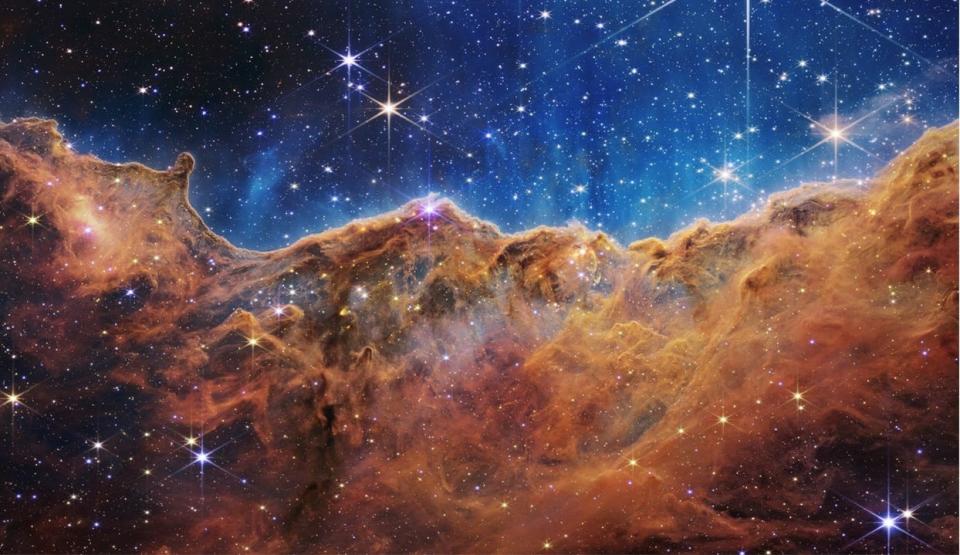

At first glance, this may look like a photo of a rocky mountain range under a starry sky. But this is actually the edge of a giant cavity in a stellar nursery called the Carina Nebula, 8,500 light-years from Earth.
This cavernous region, nicknamed the ‘Cosmic Cliffs’, is formed by massive, hot young stars in the cavity’s core. These stars emit powerful winds and radiation that have carved out this area over time.
Protostar formation in L1527
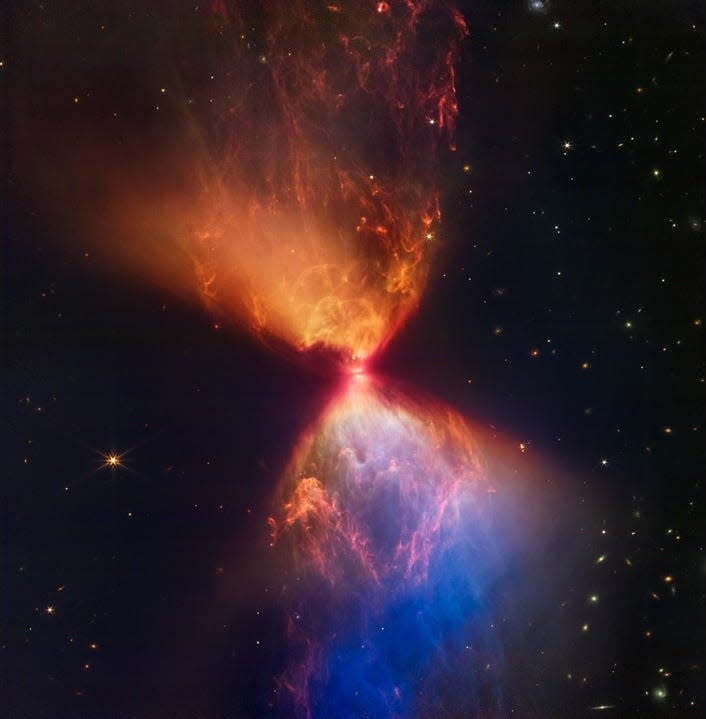

Turbulence deep within stars’ nurseries creates high-density regions called nodes. When these knots grow large enough, the gas and dust collapse and the material in the core heats up, creating a baby star or “protostar.”
This is a close-up of a protostar forming in the dark cloud L1527, a star-forming region within a larger stellar nursery, the Taurus molecular cloud, about 460 light-years from Earth. The protostar is hidden in the “neck” of this hourglass shape.
This image clearly shows how wind and radiation emissions from this very young star blow away surrounding gas and dust. The emissions glow orange and blue in this infrared image, making it look like a fiery hourglass.
Protostellar outflow in the Perseus star nursery
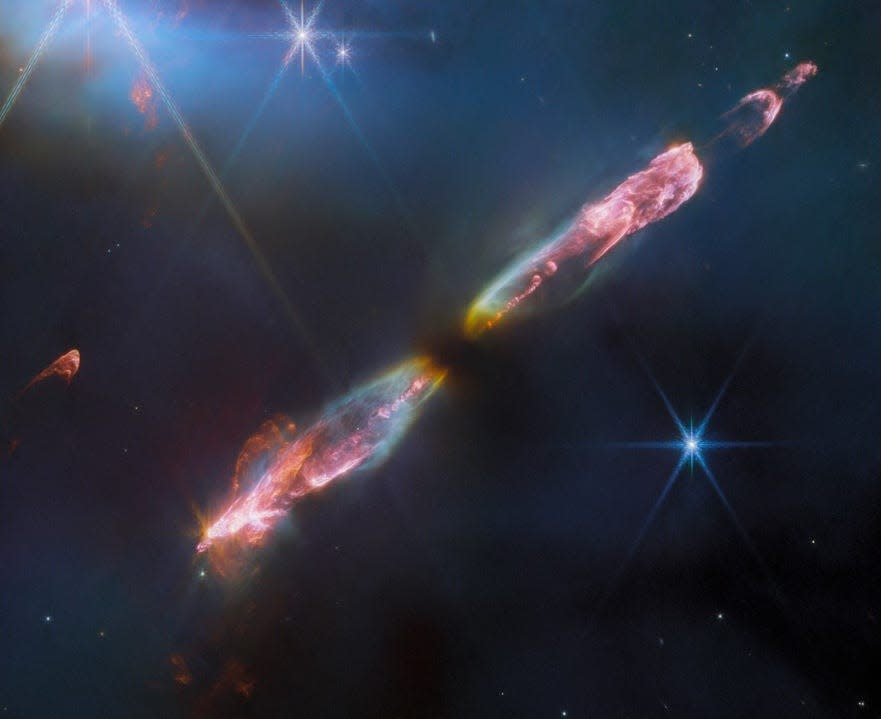

A look inside Perseus’ star nursery allowed JWST to capture another stunning image of the protostellar outflow.
This is an example of a Herbig-Haro object, which is formed when wind and gas emitted by newborn stars cause high-speed shock waves to collide with surrounding gas and dust. Molecules get excited by this turbulence and emit infrared light, the colorful glow that JWST photographed here.
The protostar hides in the black void at the center of these glowing shock waves, shrouded in a dark brown cloud of gas and dust.
Rho Ophiuchi
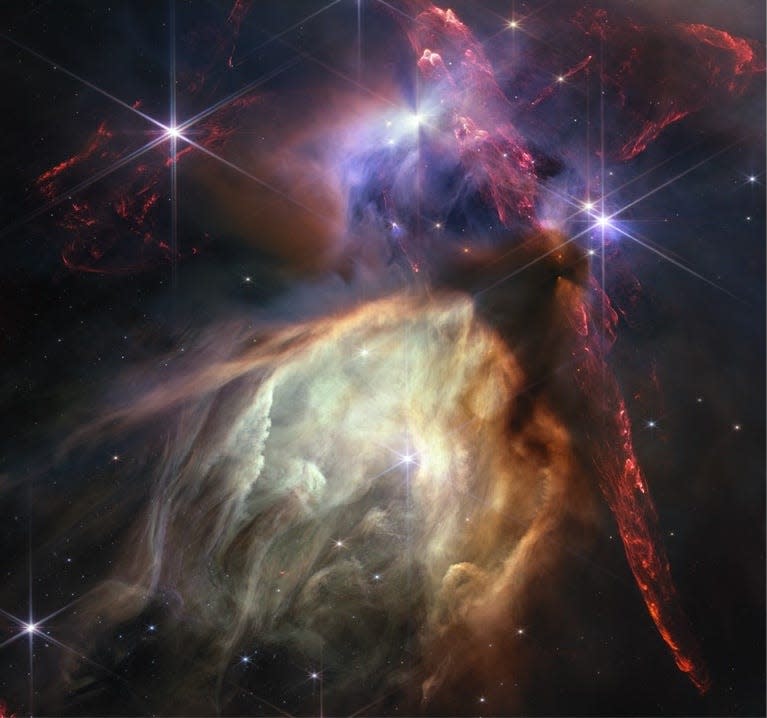

Rho Opiuchi is the nearest stellar nursery at a distance of about 390 light years.
It’s relatively small and quiet compared to other star-forming regions, but this image shows dramatic outflows from about 50 young stars as large or smaller than our Sun, which you can see here as red clouds on the right amid the clouds in the sky. center glowing green and orange due to carbon-rich dust, Pontoppidan said.
The Tarantula Nebula
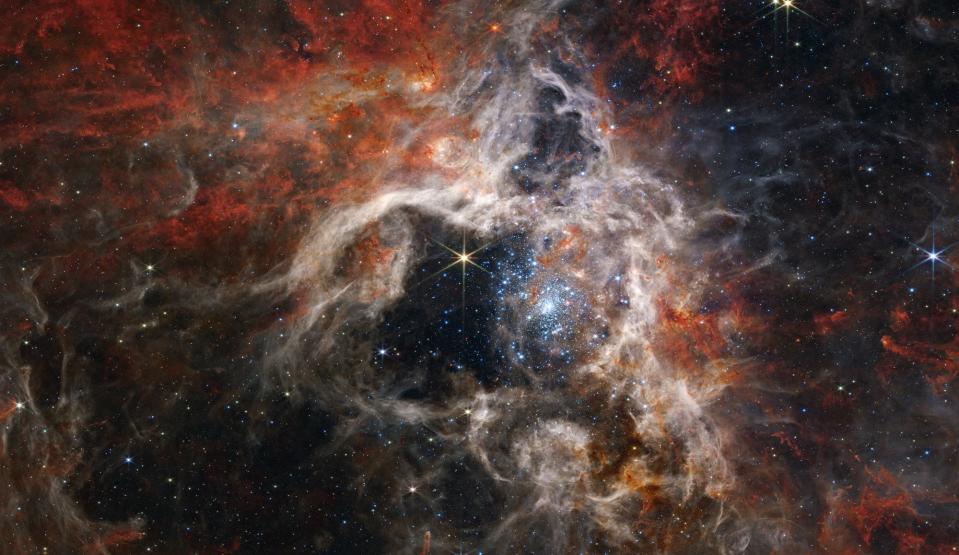

This mosaic image of the Tarantula Nebula spans 340 light-years across. JWST shows this stellar nursery in a completely new light, with thousands of never-before-seen young stars visible at its center.
The Tarantula Nebula is of particular interest to astronomers because its chemical composition is similar to the massive star-forming regions observed at the universe’s “cosmic noon,” when star formation was at its peak.
The Orion bar
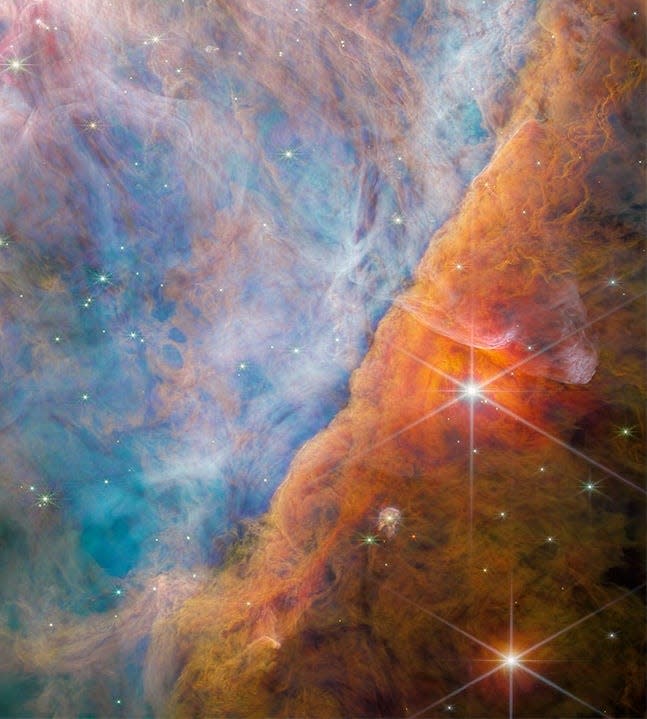

This region of the Orion Nebula is known as the Orion Bar. In this ridge-like region, ultraviolet light from the Trapezium Cluster (a group of massive young stars in the upper left corner of the image) erodes the surrounding molecular cloud.
Scientists are interested in observing this region of the Orion Nebula because it resembles what our solar system may have looked like when it was still forming. Pontoppidan said.
The Chameleon I molecular cloud
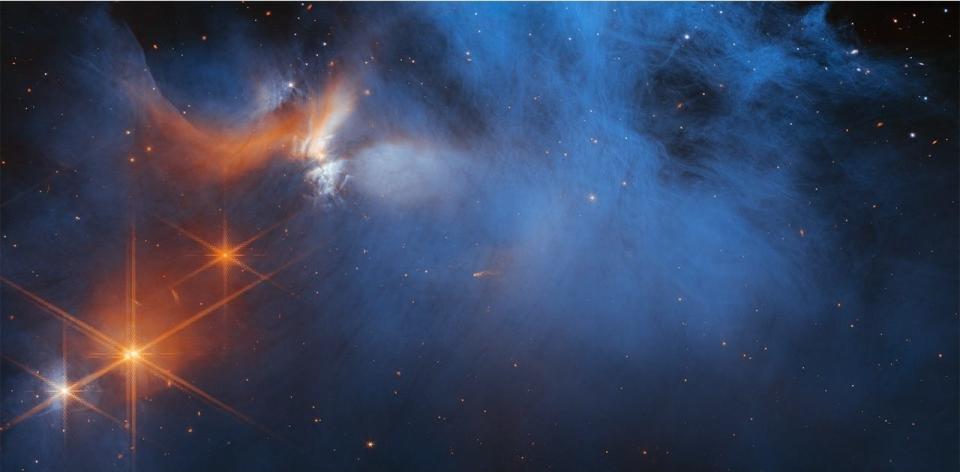

One of the building blocks of life is hidden in this image: water ice.
This is the center of the icy dark molecular cloud Chameleon I. Radiation from Ced 110 IRS 4, a young protostar glowing orange in the upper left of the image, illuminates the misty blue cloud material around it.
In the background shines the light of even more stars (orange dots behind the cloud). By studying this light, astronomers have discovered water ice particles in the clouds, which could one day form exoplanets with the right conditions for life.
N79: a huge star-forming complex
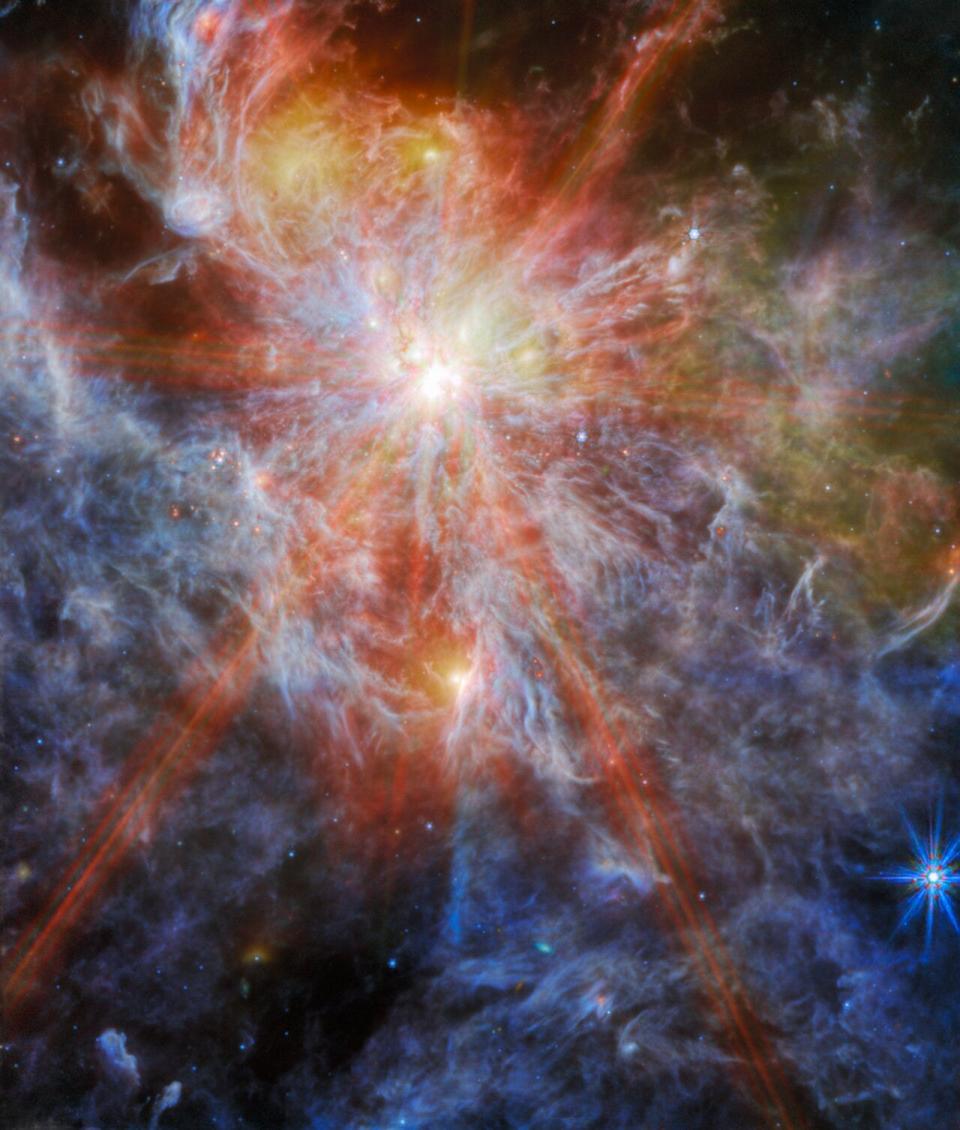

Nebula N79 is a huge star factory. It is considered a younger version of the Tarantula Nebula, but it is almost five times larger and measures 1,630 light-years across. And when it comes to birth stars, N79 is twice as efficient.
In this image, a bright young star shines through the nebula, revealing its six starburst peaks.
NGC 604: an emission nebula
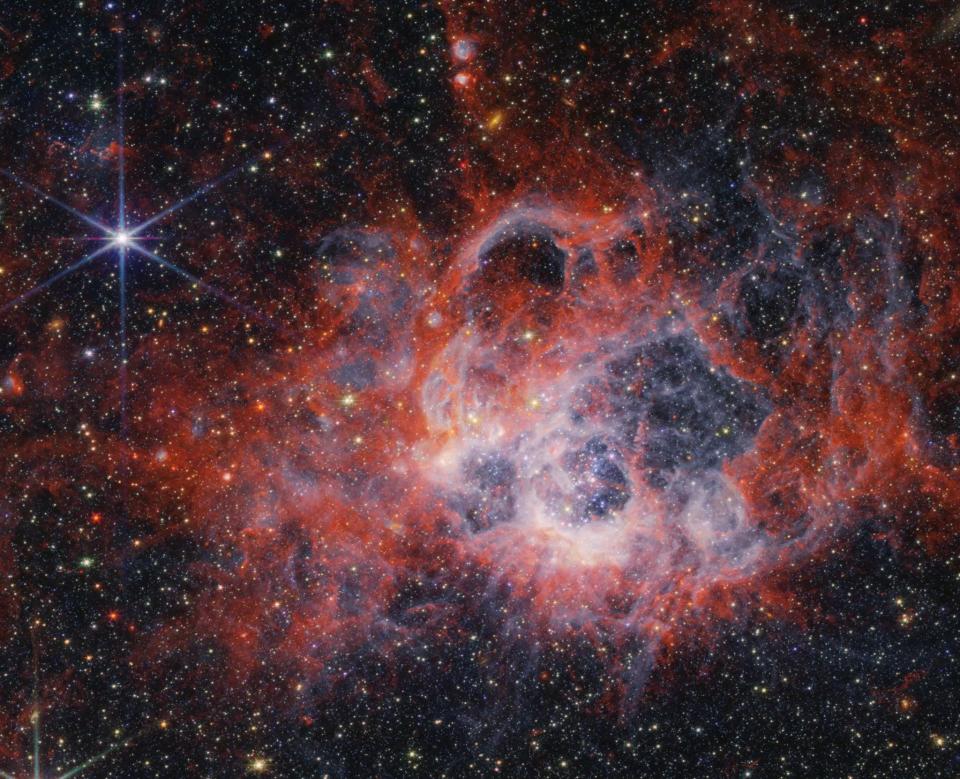

The stellar nursery NGC 604 is an emission nebula: a cloud of ionized gas that emits its own light at different wavelengths. In this image, the tendrils and clumps of emission appear in bright red, extending from open “bubbles” in the cloud.
These bubbles are carved by stellar winds from extremely hot, bright young stars within. In fact, NGC 604 is home to more than 200 of the hottest and most massive types of stars in the universe, all of which are still in their infancy. An example is O-type stars, which can be more than 100 times more massive than our Sun.
In this way, NGC 604 is truly unique. There is no other star-forming region in the entire Milky Way.
The pillars of creation
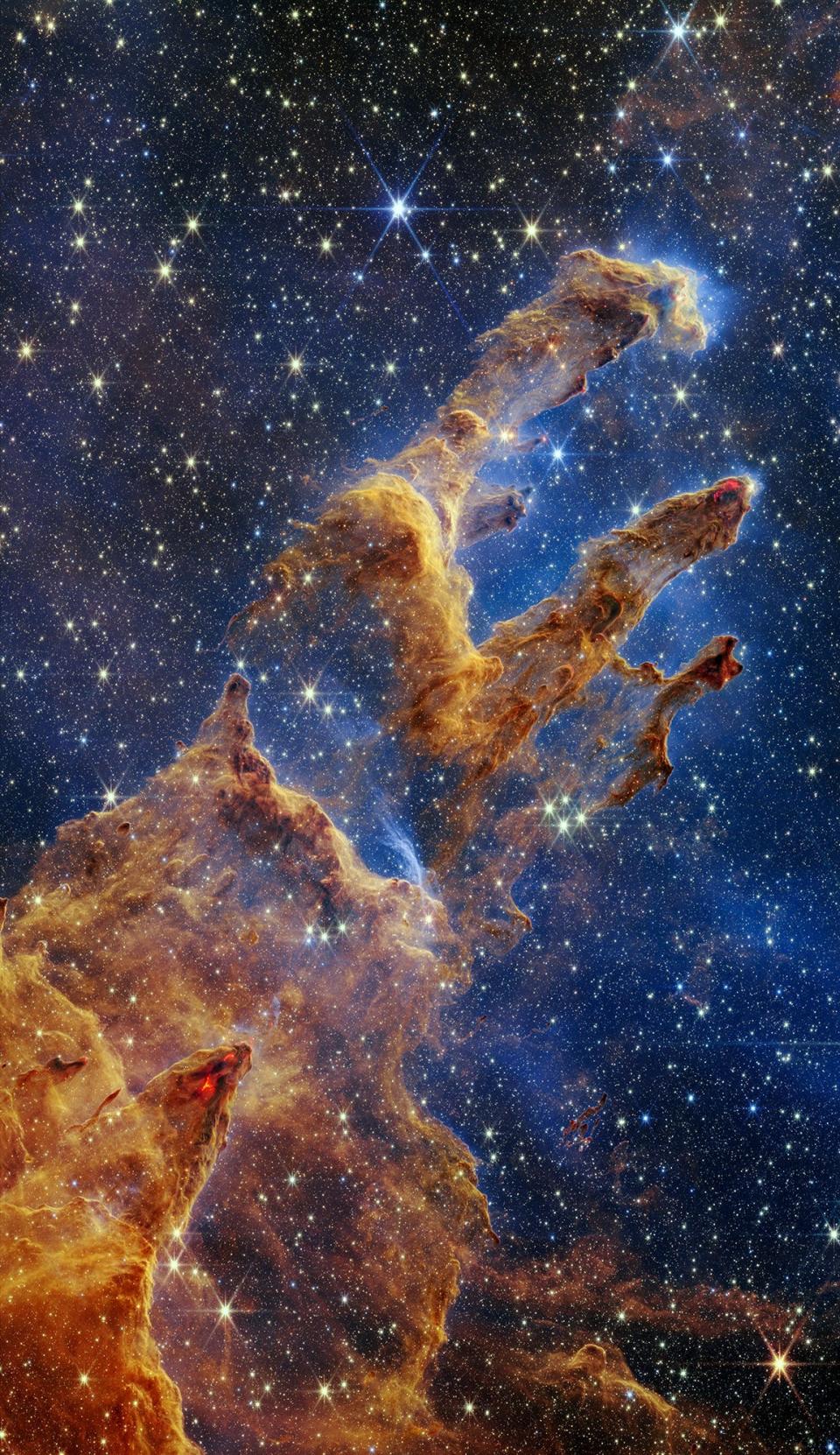

These are the Pillars of Creation, named for the long, vertical clouds of gas and dust that resemble the geological arches and spiers of a desert landscape. Photographed from this angle, they almost resemble a human hand reaching out into the cosmos.
The pillars themselves are about five light-years high. Inside, knots of gas and dust collapse on themselves to form new stars. Bright red, wavy lines at the edges of the pillars are ejections from newly formed stars.
Read the original article on Business Insider